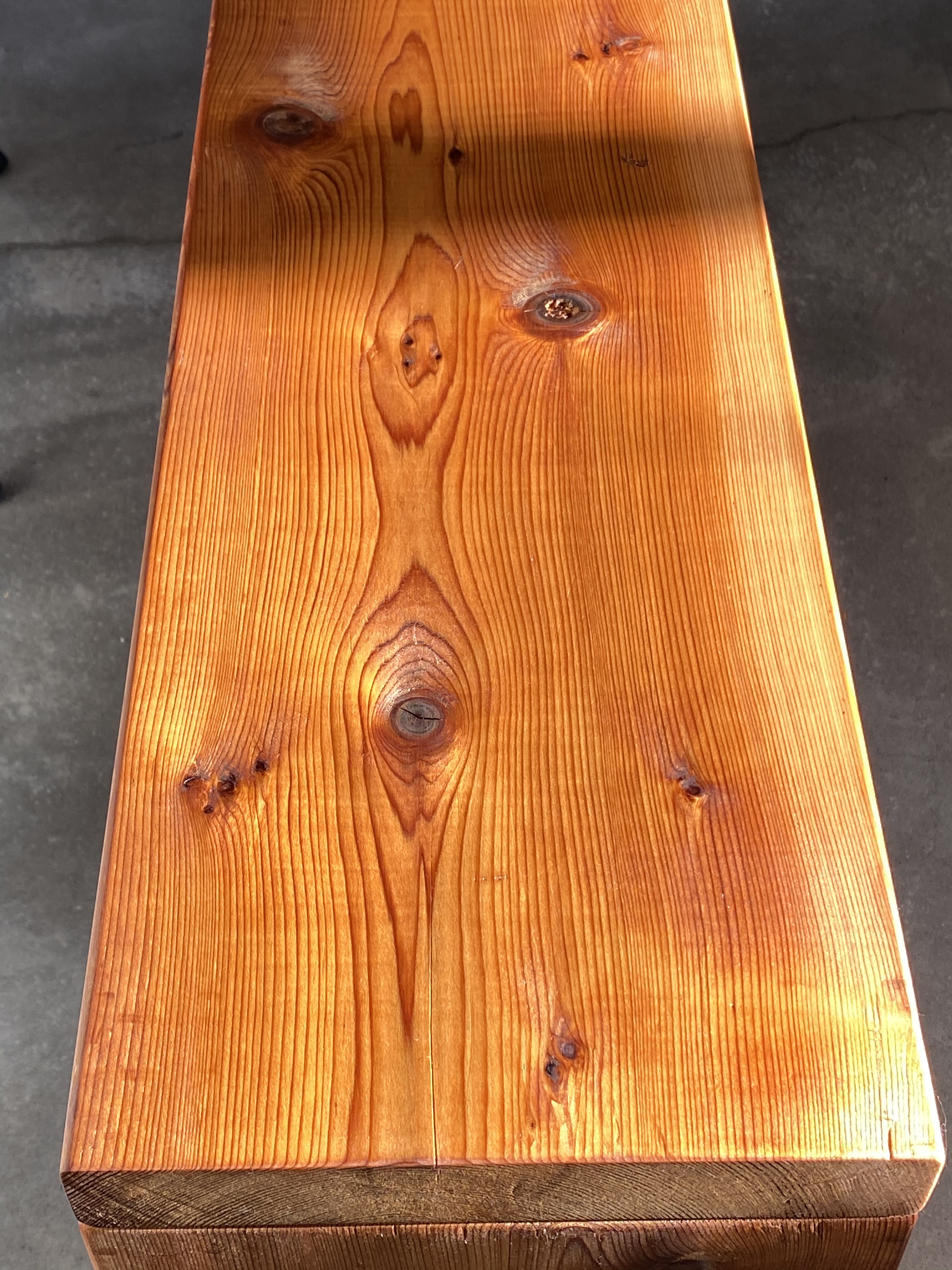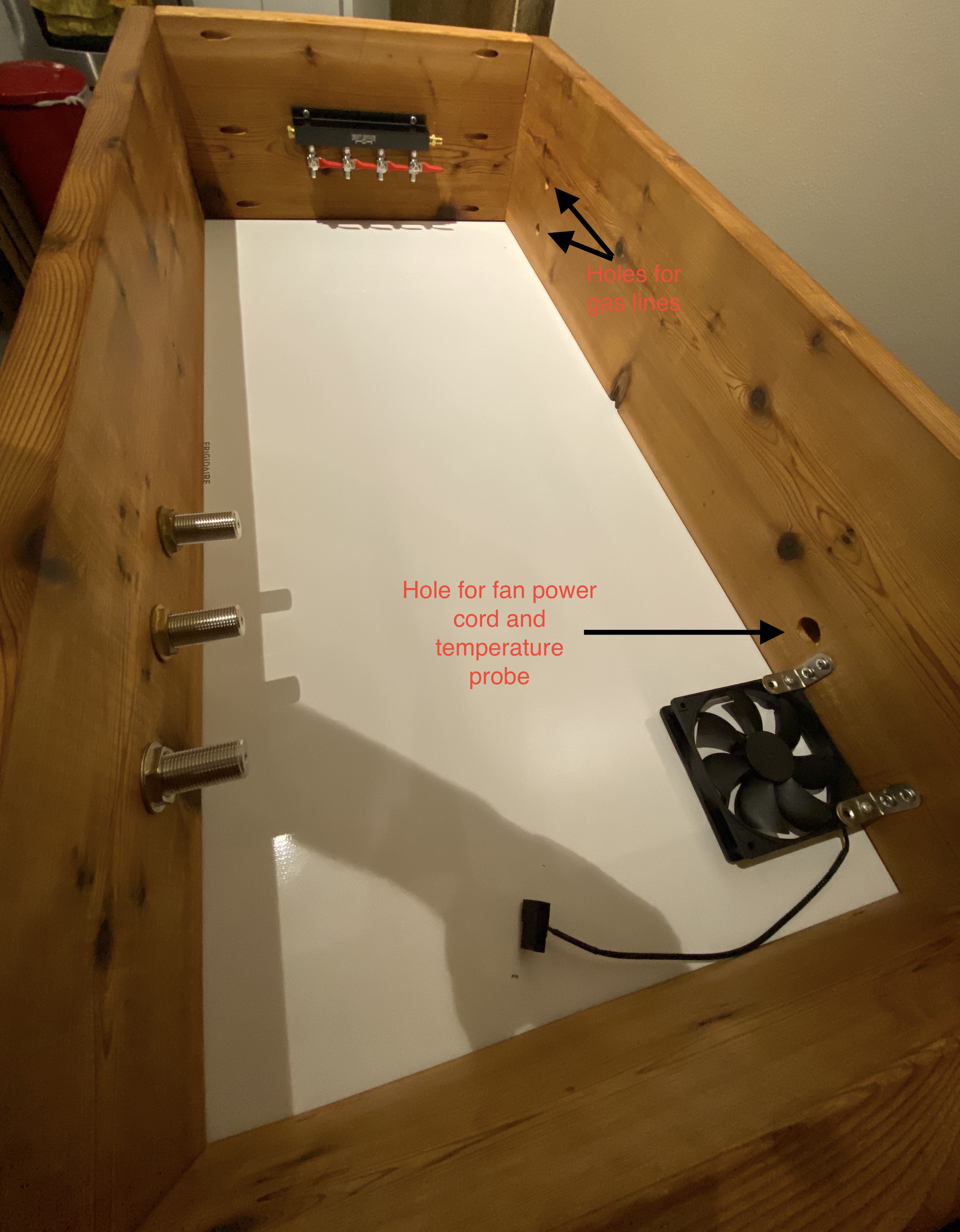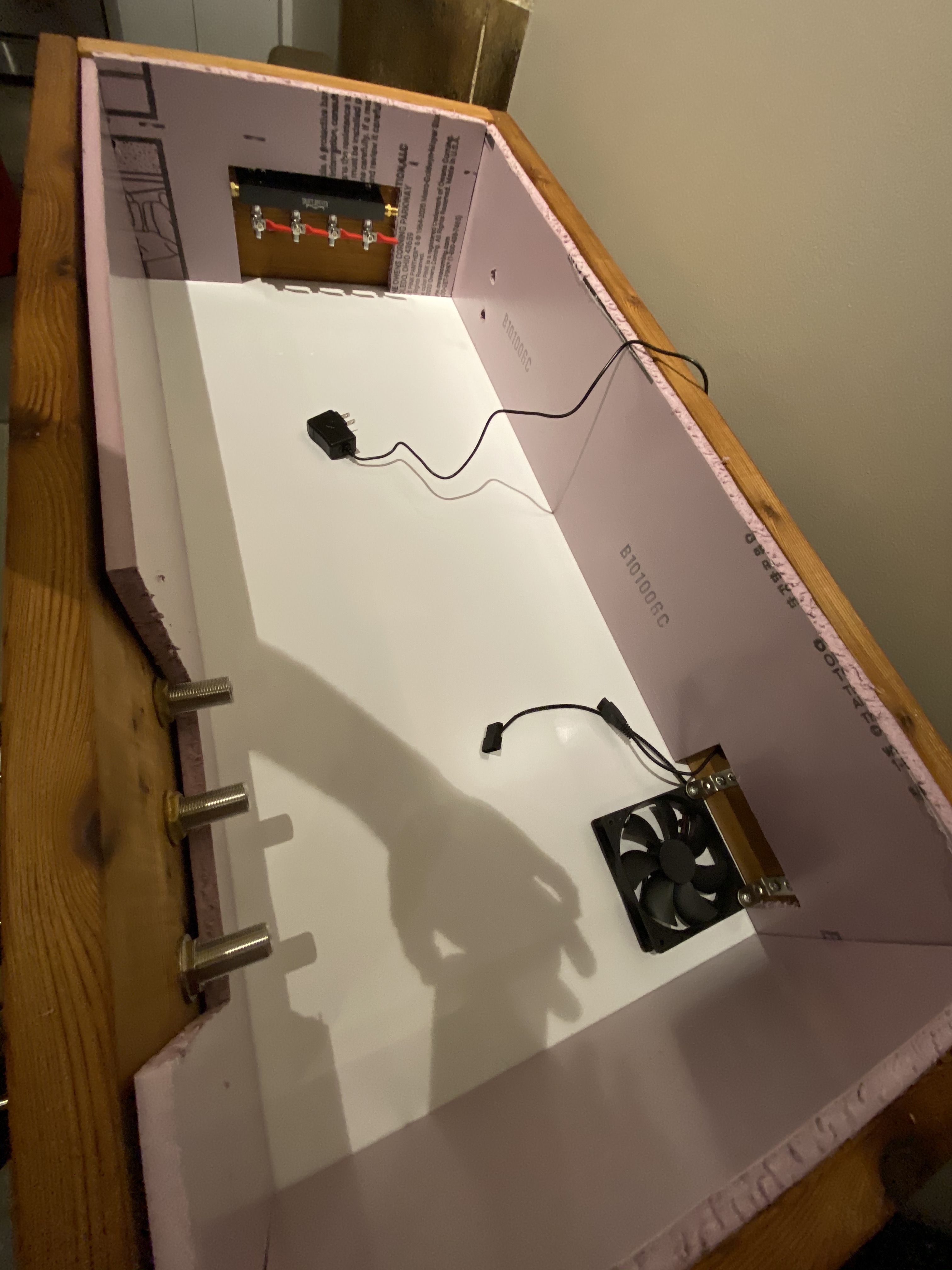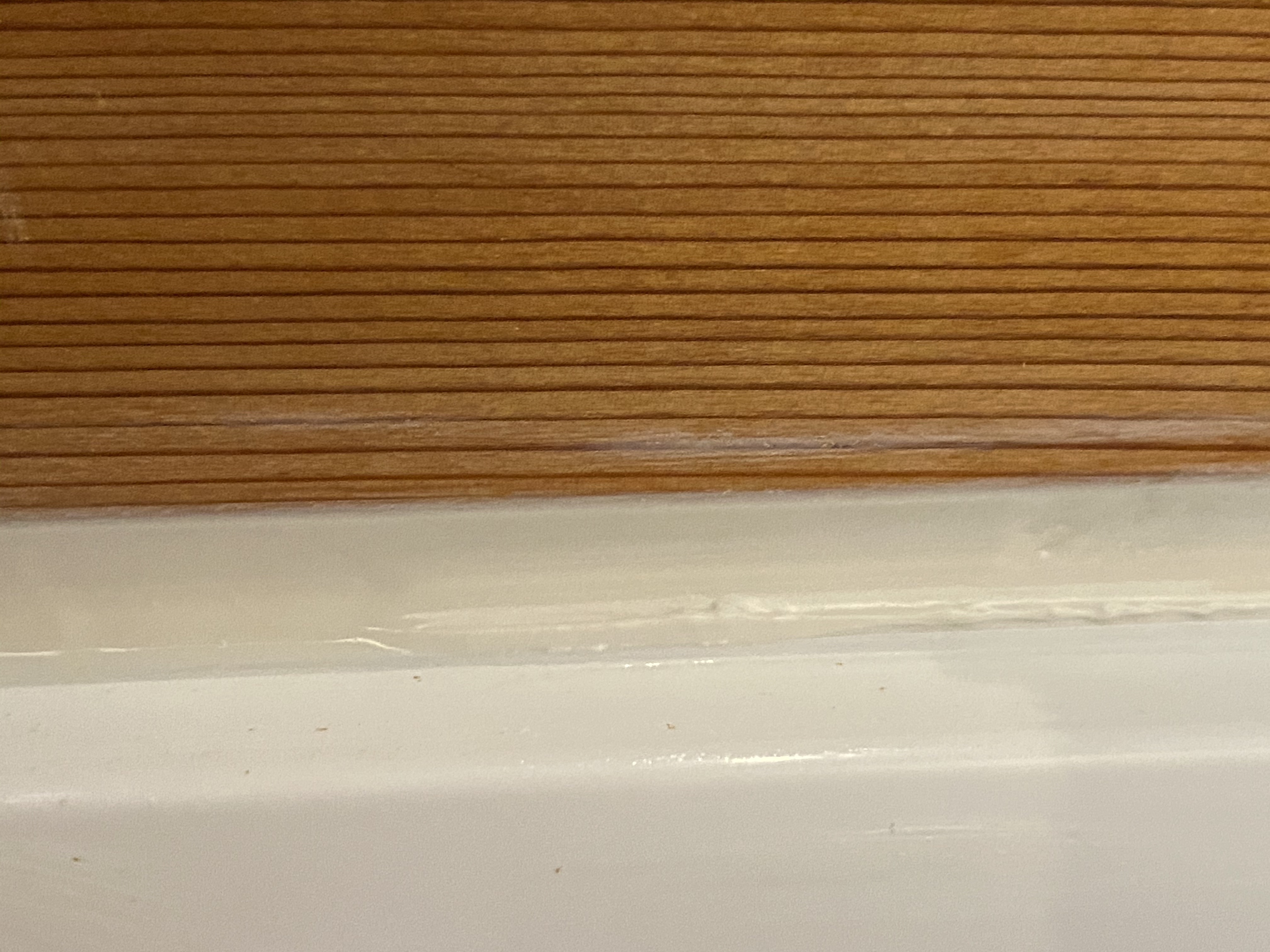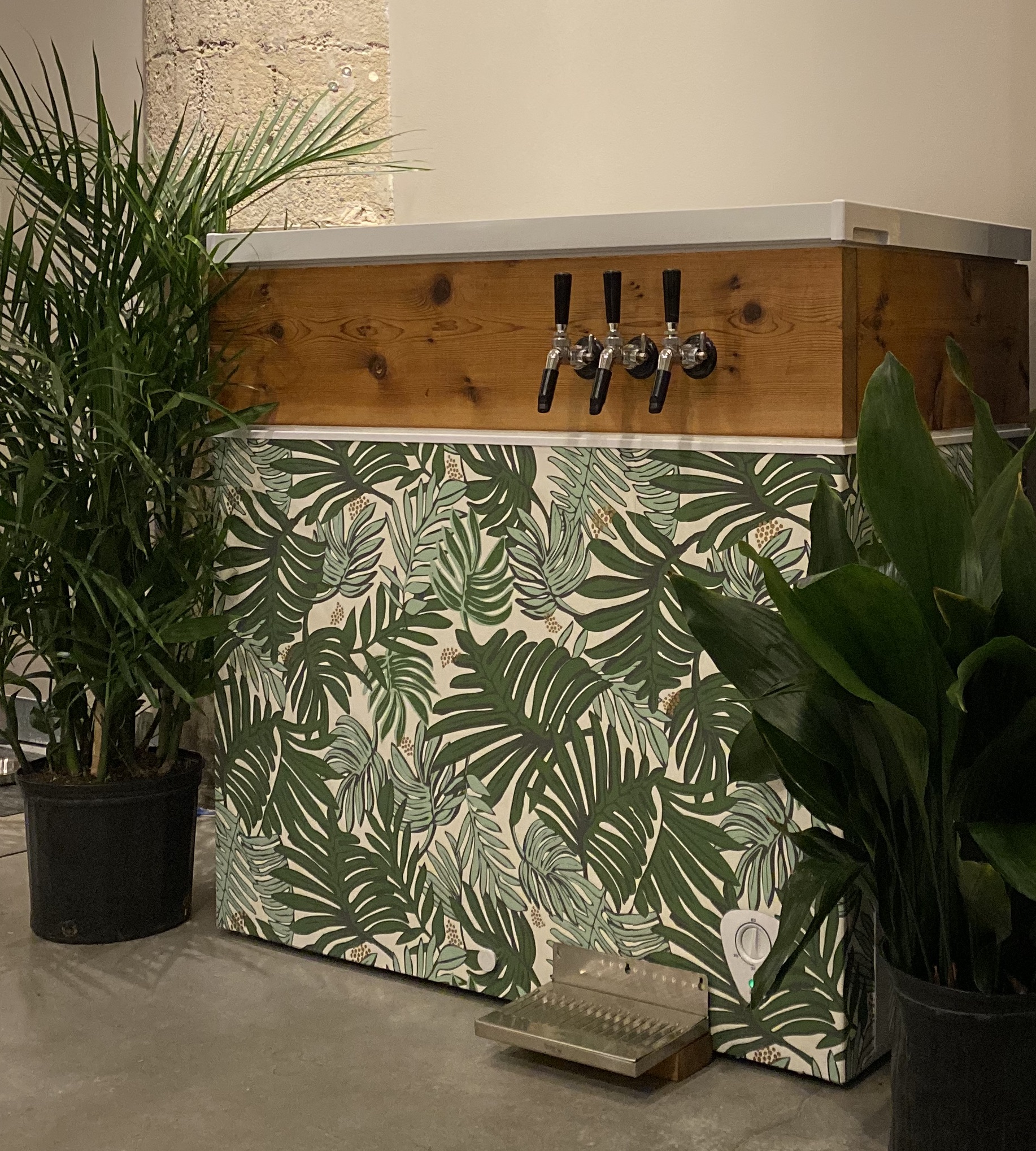I've posted on here a couple times asking for advice on a keezer build that my girlfriend and I were working on. We've now completed the build (pictured below), and are very happy with what we've accomplished. That said, we are both complete amateurs to any kind of home-improvement (or generally any project involving tools) so we found ourselves learning quite a few lessons along the way that we wished we had known before starting. As a service to future keezer builders (and as a reference in case we ever decide to build another keezer), I've decided to document, step by step, what we've done, and list out all the lessons and tidbits that we learned along the way.
As I mentioned before, we are complete amateurs, so some of the lessons here might be wrong, and of course, some people might have had different experiences. If anyone has any different thoughts, please feel free to share. I'm also happy to answer questions to the extent I am able.
It'll probably take me a few days to get through this, so I'll put here an outline of the posts that I intend to make on this thread. I'll post placeholder posts that I'll edit later, and I may write the full posts out of order.

And here it is post drip tray addition and decoration:

As I mentioned before, we are complete amateurs, so some of the lessons here might be wrong, and of course, some people might have had different experiences. If anyone has any different thoughts, please feel free to share. I'm also happy to answer questions to the extent I am able.
It'll probably take me a few days to get through this, so I'll put here an outline of the posts that I intend to make on this thread. I'll post placeholder posts that I'll edit later, and I may write the full posts out of order.
- Shopping list
- Materials
- Tools
- Hardware
- Building the collar
- Finishing the wood
- Boring holes and mounting hardware
- Cutting insulation foam
- Mounting the collar to the freezer
- Insulating the collar
- Finishing up
- Next steps

And here it is post drip tray addition and decoration:

Last edited:




